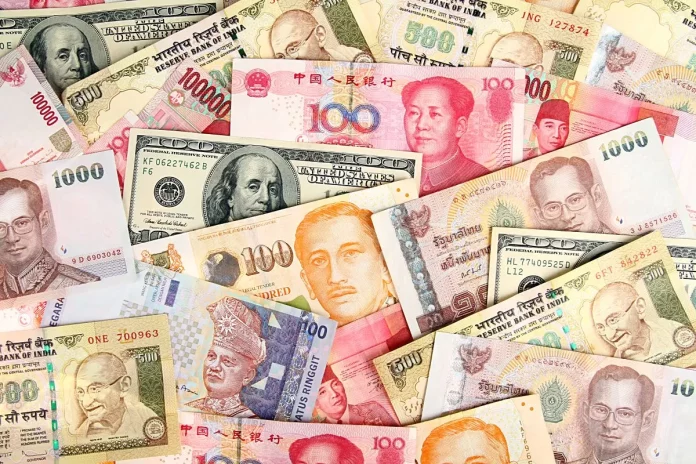Most Asian currencies moved in a flat-to-low range on Wednesday as traders hunkered down before a slew of economic cues and central bank meetings in the coming weeks, while the dollar steadied after rising sharply overnight.
Fears of a U.S. economic slowdown, following a string of weak corporate earnings and softer-than-expected consumer confidence data, fed safe haven demand for the dollar and kept appetite for most risk-driven assets limited this week.
This saw the dollar index and dollar index futures jump over 0.5% each on Tuesday, even as U.S. Treasury yields fell and investors grew uncertain over more interest rate hikes by the Federal Reserve.
The central bank is expected to hike rates by 25 basis points next week, after which markets are pricing in a 68% chance for a pause in June. But the Fed has given no indication that it intends to taper its hawkish stance, with several officials recently calling for higher interest rates.
The prospect of higher U.S. interest rates, despite slowing economic growth, weighed on most Asian currencies, especially as the gap between risky and low-risk yields narrows.
Safe haven demand spilled over into Asian currencies, with the Japanese yen up 0.1% after advancing 0.4% in overnight trade. Gains in the yen came even as new Bank of Japan Governor Kazuo Ueda signaled that the bank’s ultra-dovish stance will continue in the near-term, Investing.com cited today.
Focus is now on Tokyo inflation data and a BOJ meeting on Friday for more cues on the Japanese economy.
China’s yuan rose 0.1% but closed in on the 7 level against the dollar, as continued concerns over an uneven economic recovery in the country fueled steep losses in the yuan this week. Data on industrial profits is due on Thursday and is expected to shed more light on the country’s laggard manufacturing sector.
The Thai baht was among the few outliers for the day, up 0.4% as data showed that the country logged an unexpected trade surplus in March. Exports shrank less than expected, while imports fell much more than forecast.
The Singapore dollar also advanced 0.1% as data showed industrial production improved in March from the prior month.
The Australian dollar fell 0.3% as data showed that inflation continued to ease in the country, albeit at a slower-than-expected rate. The mixed reading ramped up uncertainty over the Reserve Bank’s plans for interest rates, ahead of a meeting next week.









